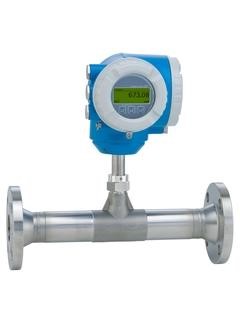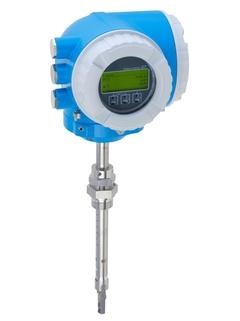Whenever high turndown or low pressure losses are important in gas metering applications in any industry, thermal mass flowmeters offer a real alternative to traditional measuring techniques – whether for process control, consumption and supply monitoring, detecting leaks or monitoring distribution networks. Using insertion versions, it is also possible to measure gas flows in very large pipelines or in rectangular ducts.

Long-term stable, this in-line flowmeter with an easily accessible compact transmitter.
Predecessor model: t-mass 65F, t-mass 65I

Long-term stable, this insertion type flowmeter has an easily accessible compact transmitter.
This measuring principle is based on the fact that heat is drawn from a heated body when a fluid flows past.
A thermal flowmeter contains two PT100 temperature sensors for this purpose. One sensor measures the current fluid temperature as a reference. The second sensor is heated and has a constant temperature differential relative to the first sensor at “zero flow.”
As soon as the fluid begins to flow in the measuring tube, the heated temperature sensor cools off due to the fluid flowing past – the higher the flow velocity, the greater the cooling effect. The electric current required to maintain the temperature differential is thus a direct measure of mass flow.